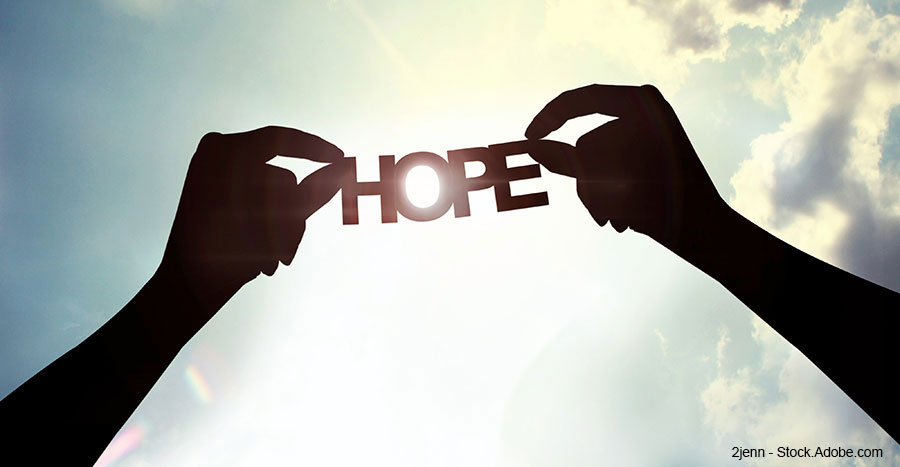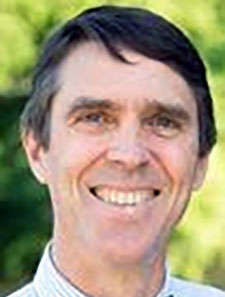 Scanning the labs of the woman I am admitting from the emergency department, I see a calcium of 12. “Oh no,” the thought jumps to the front of my mind, “This might be from a recurrence of her breast cancer.”
Scanning the labs of the woman I am admitting from the emergency department, I see a calcium of 12. “Oh no,” the thought jumps to the front of my mind, “This might be from a recurrence of her breast cancer.”
We are trained to look for abnormalities and see the possible worst outcome. We need to have this mindset if we are to prevent that worst outcome. Uncovering all potential bad outcomes is an essential skill, yet it is simply a more intentional form of a human being’s natural negativity bias.
As our country enters a time of uncertainty, I find this worst-case-scenario mindset is not serving me well. Will my patients lose vaccine insurance coverage? Will some states struggle to retain enough OB/GYNs to serve their populations?
Along with sometimes relentless ruminations about our country and the world, in my moments of anxiety, I get a visceral sense of what a plethora of studies support: Hope is essential for human flourishing and without it, we wither.
Reflecting on it for a second, I should have a deeper understanding of hope. Because in a way, aren’t we in the business of hope? But I’m not sure I know exactly what hope is. And what is our relationship to it?
Psychologist William Miller calls hope a “vital component of our psychological capital.” We need it to persevere in a life with inevitable challenges. Decades of research suggest being hopeful leads not only to a higher quality of life but also to more resilience, creativity, and better problem-solving skills.
As physicians, hope is fostered largely through our treatments—that is our fundamental task. In an unsettled world, that model of providing hope breaks down. There are no simple prescriptions for what ails the world when we are facing political, social, and environmental issues where we have so little agency.
For me, hope was not part of my formal training curriculum. Only after decades of practice have I started to think about hope as an emotional and intellectual process and to talk explicitly to my patients about it.
Hope can be defined as “motivation to persevere toward a goal or end state, even if we’re skeptical that a positive outcome is likely.” I’ve come to see it as something more complex; this definition feels static. Life is ever-moving, and as a result hope should be fluid, more of a dynamic mindset for approaching life.
I had a lesson on this the other day, seeing the grace with which a patient faced the end of his life. I said to him, “Mr. R, as we talked about the other day, it appears your cancer has progressed. I am so sorry. This means we need to talk about what we can hope for from here.”
“Well, Dr. Hass, I have been holding our hope for a cure, but thinking about it the last few days, honestly what I want out of life now is to dance with my daughter at her wedding next month.”
I replied, “It brings tears to my eyes thinking about it and I promise you we will do all we can to make it happen.”
True hope requires adaptability. The only thing constant in life is change, so we need a vision of hope with aspiration towards a goal, but also flexibility as our situation changes.
Life is always moving forward and small hopes with simple desires punctuate our days, but hope must amp up in the face of fear. Fear is an intense hardwired emotion to point out threat. There is little to prevent fear from alarming us when the appropriate stimulus arises. What we do next in the face of this threat requires more complex thinking. And while hope springs eternal, hope needs nurturing.
What qualities of mind are needed to foster a healthy response to fear? Fear pounces upon us from the amygdala. To cultivate hope we must draw upon diverse cognitive skills. Critically, we need a desire for change—and then we must cultivate steadiness of mind or equanimity in the face of the challenge ahead. We need the ability to focus calmly so we bring curiosity and critical thinking to our situation to formulate our plan. Lastly, we need the drive to work against adversity to give our plan the chance of success.
Psychologist Charles Snyder proposed a model for a hopeful mindset with two components: Pathway thinking involves planning a route to our desired outcome. Agency thinking requires an enduring belief that our goals can be achieved despite potential barriers. In tough times, we can feel demoralized, and both can be hard to come by.
This is where another key modulator of hope comes in—community. Sometimes we just need the human connection to find hope. Even when I have no curative treatments to offer, and death is inevitable, just holding a hand and committing to “facing this together” provides my patients some solace. Simply being with someone can provide hope against the fear of isolation.
Hope, like other emotions, can be contagious. Together people can support, motivate, brainstorm, and strategize, thereby developing pathway thinking and fostering agency thinking. In fact, there is a form of group psychotherapy that uses this idea to help people move through life’s challenges. In Hope Therapy, people come together to listen, plan, and create a support system. Individuals leave the session with a hopeful approach to their struggles and others to call on to bolster them as they move forward.
In tough times, modest hopes with small goals, approached collectively, can build a community ready to address its larger challenges. Every day with our patients we do this: we create small teams; we find a treatment pathway; and our compassion and expertise support our patients’ agency. Each time we enter a room is an opportunity to create a collective sense of hope, even at times in the face of inevitable grief and loss.
To heal the country, the next step involves working with neighbors to develop hope while working on something small and local we care about in our communities, whether that be a religious group, a park, or a social organization. As physicians, we are natural leaders and should consider finding ways to contribute outside the hospital. Not only is hope a way forward for the individual, but research also suggests hope promotes tolerance and conflict resolution, which is crucial at times of wide social divisions.
As hospitalists, we seek to provide comprehensive person-centered care; providing hope is a way to move our care beyond simply giving drugs and durable medical equipment. Explicitly bringing a hope mindset to our encounters and passing this on to our patients does require a little time. We need to ask questions: Where do you find joy? What are the biggest challenges you face? What are you hoping for in the next phase of your life? Our interdisciplinary teams can help us in this process, but when we lead, the impact will be much greater. Hope improves compliance, self-efficacy, recovery, and even life expectancy. In these conversations, we will undoubtedly find information that will help in diagnostic and therapeutic processes too. Importantly, the connections created will benefit both the patient and the physician. My most memorable moments as a hospitalist have come not from diagnostic “zebras,” but from moving conversations at the bedside.
Hope is future-facing, a liminal space, a threshold, and an emotion that keeps us moving forward with intentionality, enthusiasm, and curiosity. At times, we can almost literally feel hope lifting our body toward our goals, buoying us up, and pulling us forward.
Hope is also a mindset and a practice that encourages us to be our best selves as we work towards making a better future. Maria Popova, blogger and essayist, says, “These days I am less certain I will see the rosy outcome I would like, but I am more determined to meet the future with the best version of myself.” As healers, we should bring hope to the bedside. Let our conversations guide our patients toward this hope mindset. As a team, creating a discharge prescription for hope should be one of our goals in hospital medicine.
 Dr. Hass is a hospitalist at Sutter East Bay Medical Group in Oakland, Calif. He is a member of the clinical faculty at the University of California, Berkeley-UC San Francisco joint medical program, and an adviser on health and healthcare at the Greater Good Science Center at UC Berkeley, both in Berkeley, Calif.
Dr. Hass is a hospitalist at Sutter East Bay Medical Group in Oakland, Calif. He is a member of the clinical faculty at the University of California, Berkeley-UC San Francisco joint medical program, and an adviser on health and healthcare at the Greater Good Science Center at UC Berkeley, both in Berkeley, Calif.